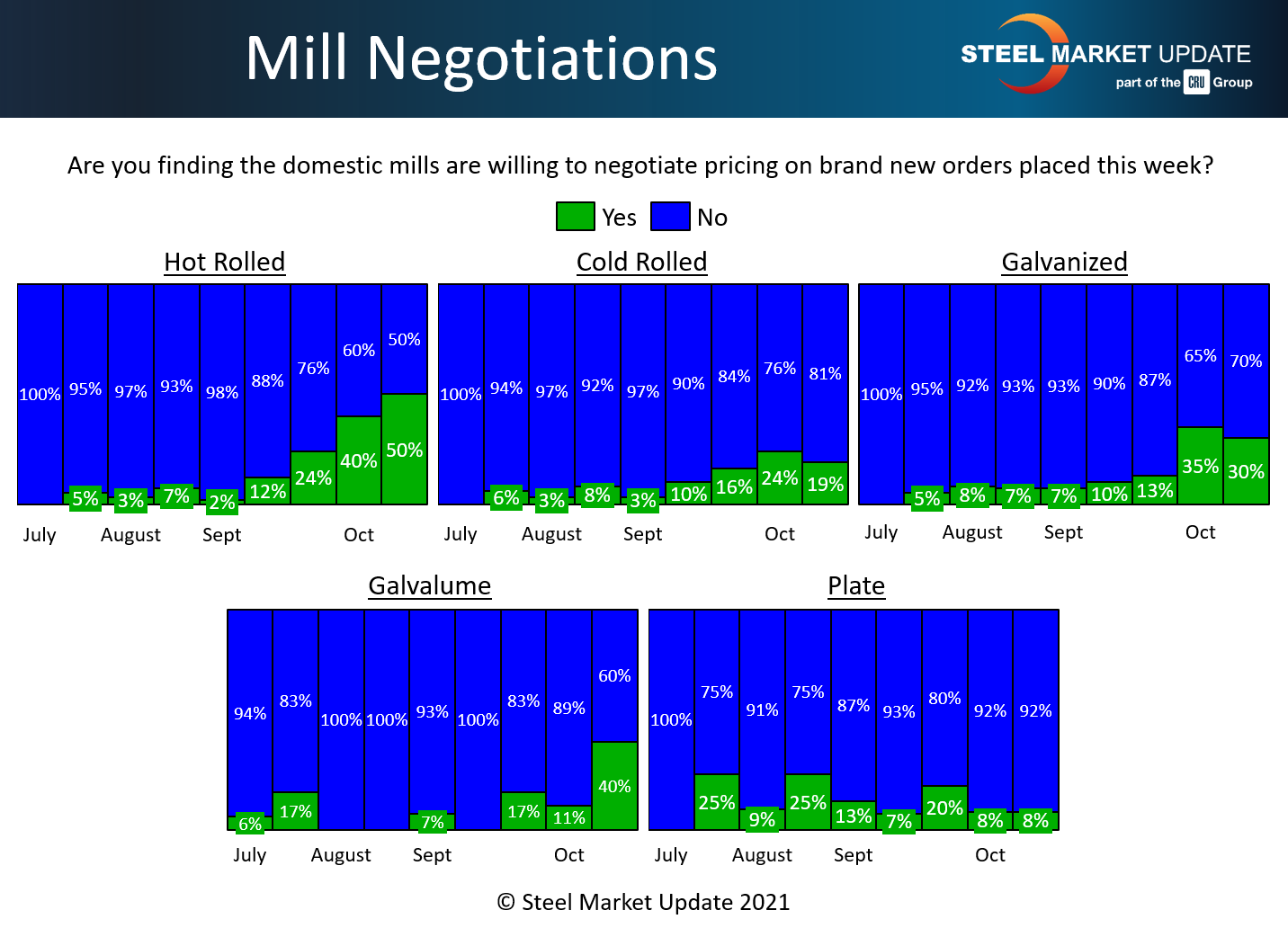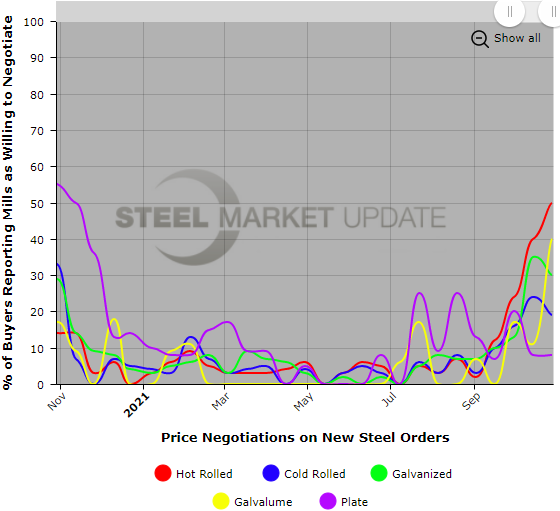SMU Data and Models

Steel Mill Negotiations: Now a 50-50 Proposition in HR
Written by Tim Triplett
October 28, 2021
Steel Market Update data suggests buyers continue to gain some leverage in price negotiations. SMU asks buyers every two weeks if the mills are willing to talk price on spot orders. Around 50% of hot rolled buyers responding to this week’s poll said some mills are now willing to bargain to secure an order. That’s double the 24% just a month ago.
The mills maintain a tighter grip on negotiations in the other product categories. About 81% of cold rolled buyers, 70% of galvanized buyers, 60% of Galvalume buyers and 92% of plate buyers say the mills are still unwilling to negotiate as demand for their products remains strong.
Mills still have the dominant bargaining position for most products, but the fact that it’s a 50-50 proposition in hot rolled is a notable change and a balance not seen since August 2020.
What Respondents Had to Say
“No one is buying, so there’s no real negotiation yet.”
“Not much negotiating yet. The mills are toeing the same line across-the-board. Consolidation – and dare I say collusion – are adding a level of security for these lofty prices.”
“Mills seem to be satisfied protecting price and profit vs. chasing orders that don’t exist.”
“Pickling constraints are limiting any increased spot cold rolled, so there’s no need to lower prices.”
“Finally, plate has arrived at the party. The music is starting to slow of course, but the plate guys will try like hell to get back above coil.”


By Tim Triplett, Tim@SteelMarketUpdate.com

Tim Triplett
Read more from Tim TriplettLatest in SMU Data and Models

SMU’s June at a glance
A look at SMU data for the month of June.

SMU Survey: Buyers’ Sentiment rebounds from multi-year low
Both of SMU’s Steel Buyers’ Sentiment Indices edged higher this week. Current Sentiment rebounded from a near five-year low, while Future Sentiment rose to a two-month high

SMU flat-rolled market survey results now available
SMU’s latest steel buyers market survey results are now available on our website to all premium members.

SMU Survey: Sheet lead times pull back after early-June blip, plate holds
Following the uptick seen two weeks ago, lead times eased this week for all four sheet products tracked by SMU, while plate lead times held steady, according to this week’s market survey.

SMU Survey: Pricing power abruptly shifts to steel buyers
The majority of steel buyers responding to our latest market survey say domestic mills are more willing to talk price on sheet and plate products than they were earlier this month. Sheet negotiation rates rebounded across the board compared to early June, while our plate negotiation rate hit a full 100%.
